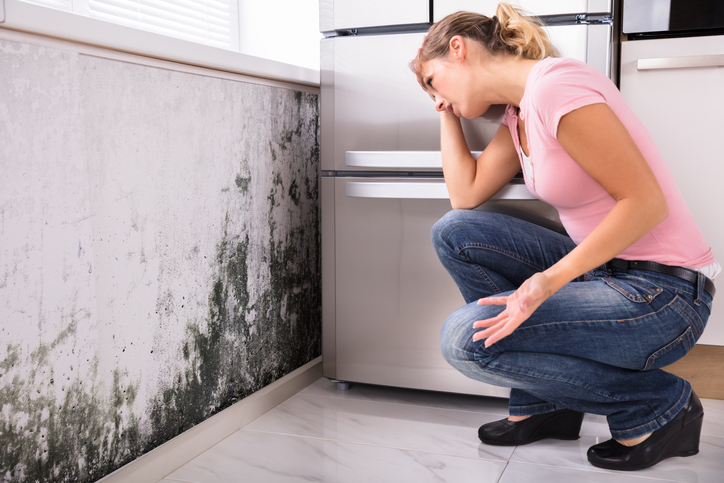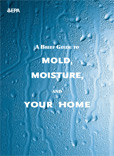
Causes of Indoor Mold
Humidity and Mold Growth
As a homeowner, understanding the relationship between humidity and mold growth is pivotal. Mold spores thrive in humid environments, and a home with constant high humidity levels provides a conducive atmosphere for mold growth. It’s not just the unsightly appearance of mold; the health implications are far-reaching too.
Maintaining a balanced indoor humidity level, preferably between 30% and 50%, can significantly curb mold growth. Investing in a dehumidifier, especially in naturally humid climates or during specific humid seasons, can be a proactive step towards a mold-free home.
Leaking Pipes and Mold
Water leaks from pipes are a common culprit behind mold infestations. Even a minor leak can result in dampness that provides an ideal breeding ground for mold spores. It’s often the hidden leaks, those behind walls or above ceilings, that pose the most significant threat since they can go unnoticed for an extended period.
Regular maintenance checks and prompt repair of leaking pipes are crucial to prevent water accumulation and subsequent mold growth. It’s advisable to have a professional plumber inspect your plumbing system for any potential leaks, especially if your home is older or has experienced plumbing issues in the past.
Poor Ventilation and Mold Accumulation
Poor ventilation can lead to stale, humid air trapped inside your home, creating a favorable environment for mold spores to multiply. Especially in areas like the bathroom and kitchen, where moisture generation is high, effective ventilation is crucial to dissipate the moisture before it settles on surfaces.
Improving ventilation across your home by using exhaust fans, ensuring vents are unblocked, and using an air purifier can help maintain an environment that’s hostile to mold growth. Also, simple practices like opening windows during dry weather conditions can significantly improve air circulation, reducing the chances of mold infestation.
Health Risks Associated with Mold Exposure
Respiratory Issues
Exposure to indoor mold can lead to various respiratory problems. Mold spores can become airborne and inhaled, causing symptoms such as coughing, wheezing, and shortness of breath, especially in individuals with pre-existing respiratory conditions like asthma.
Long-term exposure to mold spores can exacerbate these symptoms and may lead to chronic respiratory issues. It’s essential to address indoor mold promptly to maintain a healthy living environment.
Allergic Reactions
Mold exposure can trigger allergic reactions in sensitive individuals. Common allergic symptoms include sneezing, itching, red or watery eyes, and skin rashes. These reactions can occur immediately or develop gradually over time.
For those with mold allergies, it’s crucial to keep indoor spaces mold-free to avoid triggering allergic reactions which could adversely affect their quality of life.
Long-Term Health Implications
The long-term health effects of mold exposure can be severe, especially for vulnerable groups like children, the elderly, and those with weakened immune systems. Chronic mold exposure has been associated with the development of asthma in children and can potentially lead to other long-term respiratory issues.
Additionally, some types of molds produce mycotoxins which can be harmful over extended periods. Ensuring your home is mold-free is not just about maintaining a pleasant living environment, but also about safeguarding the long-term health of your family.
Identifying Indoor Mold
Visual Inspection for Mold
Undertaking a visual inspection is the first step towards identifying mold in your home. Mold manifests in various forms – black, white, green or gray spots on surfaces. It’s commonly found in damp, humid areas like bathrooms, basements, and under sinks.
However, not all mold is visible or easily accessible. Some may lurk behind walls, under carpets, or in other hidden areas, necessitating a more thorough inspection or professional assistance to identify.
Mold Testing Kits
Mold testing kits are available for homeowners who suspect mold presence but require confirmation. These kits can test the air or surfaces for mold spores. While they provide a level of insight, they may not be as comprehensive or accurate as professional testing.
Furthermore, these kits don’t provide solutions or specific identification of mold types. For a more accurate understanding and remediation advice, consulting a professional is advisable.
Professional Mold Assessment
A professional mold assessment provides an accurate picture of the mold situation in your home. Experts have the necessary tools and knowledge to identify different mold types, and the extent of the infestation, which is crucial for effective remediation.
Additionally, they can provide tailored advice on preventing future mold growth. If you’re facing persistent mold issues, a professional assessment is a worthwhile investment.
Preventative Measures Against Mold Growth
Controlling Indoor Humidity
Maintaining a balanced indoor humidity level is crucial in preventing mold growth. Utilizing dehumidifiers, especially during humid seasons or in naturally humid climates, can significantly reduce moisture in the air, making your home less conducive to mold growth.
Additionally, ensure that your home’s heating, ventilation, and air conditioning (HVAC) system is working efficiently to maintain a balanced humidity level. Regular maintenance of the HVAC system is key to preventing mold.
Regular Maintenance Checks
Regular inspections for water leaks, damp spots, and mold are crucial. Promptly repairing any leaks and addressing damp areas helps in nipping potential mold problems in the bud.
Having a routine maintenance schedule to check the plumbing system, roof, and other areas prone to water damage can prevent mold growth by addressing issues before they escalate.
Ventilation Improvement
Proper ventilation ensures that moist air is expelled from your home, reducing the chances of mold growth. Ensure that areas prone to moisture, like bathrooms and kitchens, are well-ventilated.
Investing in quality exhaust fans and using them regularly, especially during activities that generate moisture like cooking or showering, can significantly improve ventilation and reduce the risk of mold growth.
Effective Mold Remediation Techniques
Natural Mold Cleaners
Natural remedies such as vinegar or baking soda can be effective against minor mold issues. They are safe, non-toxic, and environmentally friendly. However, they might not be potent against severe mold infestations.
For minor mold spots, these natural cleaners can be a go-to solution. Regular cleaning with natural cleaners can also prevent mold recurrence to an extent.
Chemical Mold Removers
Chemical mold removers are more potent and can tackle severe mold infestations. They contain compounds that eliminate mold at the source. However, they can be harsh and should be handled with care.
It’s crucial to follow the instructions on the product and ensure the area is well-ventilated while using chemical mold removers.
When to Call a Professional
If mold infestations are recurrent or widespread, it’s time to call a professional. Professionals have the tools, knowledge, and experience to deal with mold effectively, ensuring it doesn’t return.
Should you suspect or discover mold growth within your premises, professional intervention is the safest and most effective route to a resolution. Contact FloodX for exceptional flood and mold removal services, ensuring a healthy and comfortable living environment.
Google+








